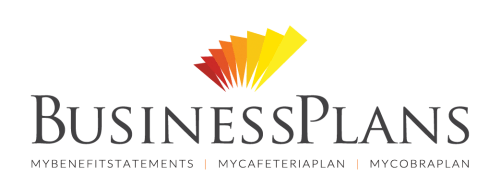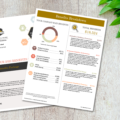
Any time of year is the perfect time to send out benefit statements to your employees. After all – most companies are hiring and working year-round! So while we’ll always tell you NOW is the best time to provide a total compensation statement, there’s a few things to consider when planning your timeline:
Customized benefit statements take approximately 10-13 weeks to produce.
Quality is one of the most important parts of our process – that’s why we don’t rush. Your project manager takes time to discuss your goals in providing this communication to your staff, helps guide you towards decisions that align with those goals, and develops a completely customized design for each individual client company. Not only that, but once you submit your data we thoroughly audit to ensure that things like IRS limits are accounted for and totals are adding up correctly.
Does your company operate on a fiscal year or calendar year?
The new year not only brings in new resolutions, but also total comp statements for many companies! It’s very common, especially for clients whose companies operate on a calendar year, to also send out benefit statements once the final payroll of the year can be processed – so this means that a majority of our clients are sending out statements in January through April. However, if your company operates on a fiscal year, it may be easier to pull your data once the fiscal year closes.
Are you showing historical data or annualized estimates based on a current snapshot of compensation?
Historical data provides employees with a look back at the previous year – data is typically pulled at the close of the year (either calendar year or fiscal year) and all numbers are collected directly from your payroll system. While this is great for displaying factual information on what has been provided for an employee, a current snapshot, annualized to show 12 months worth earnings and benefits is sometimes preferred. The total comp statement is more accurate in that it is based on current earnings and benefits costs, which are usually greater than the past year’s values. And we can calculate much of the data for you based on current rate of pay and monthly benefits costs. Unpredictable variable pay (e.g. overtime, bonuses, commissions, etc.) can be included on your statements by capturing a lookback of only those items. These statements can be produced at any time throughout the year allowing you to provide statements to your employees at the most opportune time in your schedule.
When is your open enrollment?
Many clients choose to send out benefits around their open enrollment for benefits. There are two schools of thought with this – you can provide total comp statements before open enrollment as a way to announce new benefits coming, show current benefit elections, and empower employees to make changes to their elections for the coming benefit year. Alternatively, you can provide statements after open enrollment projecting employees’ new benefit elections and what they can expect from the company for the next year. Both approaches have their merits!
Are there any major events about to come up for your company?
Just like open enrollment, other major company events may be a great time to target delivery of your total compensation statements. If bonuses or salary increases are typically introduced at a specific point in the year, it can be great to provide statements showing these increases. We also have several clients who utilize their statements to announce company-wide events or immediately following a conference to build community.
While there may be many factors in deciding how and when to provide statements to your employees, there is never a bad time to provide information on their pay and benefits. Contact us to discuss your goals and let our project managers guide you to the best delivery timeline for your benefit statements!




Comments are closed.